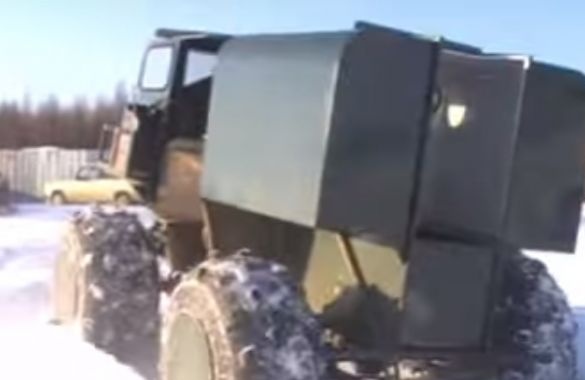One more all-terrain vehicle Yakutia. Its author is already familiar to you on the all-terrain vehicle Mirny. The author decided not to stop there and collected another no less interesting unit called Savik, a crucial type. This car is already more adapted for long exits, and accordingly has heating and a large capacity of the body.
Units used in this all-terrain vehicle:
1) The diesel engine from a loader Balanar, D3900.
2) A gearbox from gas-66 was used.
3) The wheels were taken ready-made, from earlier models of the author’s all-terrain vehicles.
4) Running from Gas-66
5) bell from Tayota L.
6) Transfer case from Surf.
Consider in more detail the steps of assembling an all-terrain vehicle.
Since the author used his existing developments, which have proven themselves on other all-terrain vehicles, many parts were borrowed from earlier models. For example, the wheels along with the welded disks were completely taken from the past of the author’s all-terrain vehicle, you can look at their more detailed creation using the link indicated in the sources of the article, or in the subject of the Mirny all-terrain vehicle.
The author also applied a completely new design feature using three transfer boxes on one all-terrain vehicle model at once, but this will be considered closer to the end of this article. So let's start in order.
To begin with, work was done on the frame and suspension of the car.
From the beginning, the rear axle was tucked up due to a short cardan, but as it turned out at high speed when the cardan speed is maximum and when coasting due to unequal angles, there was a serious roar on the crosses in the transmission.
Now the bridge is closer to normal, under the spring linings on the stocking from the front axle - with a small angle, while the author had to finalize the upper crosspiece was at the limit. And now the angles on the crosses are not equal, but at least they are closer to the green zone.
The front axle is standard.
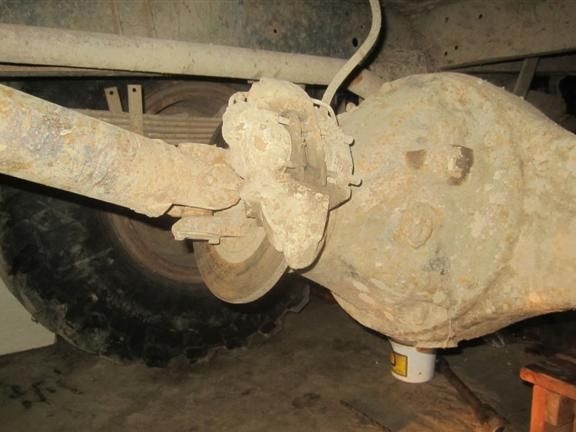
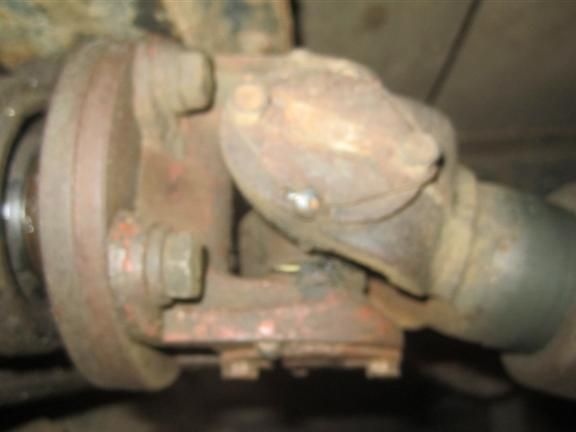
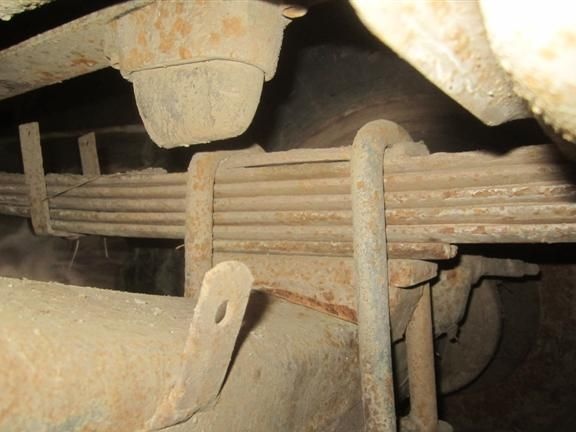
Then there were work on the brake system.
Native drum brakes were used too big and heavy, but most importantly - after visiting the mud and water baths they stop working. Even if everything is done very well, the pads are quickly erased due to the dirt abrasive trapped inside.
As an option to solve the problem, the author decided to put one longitudinal thrust on the bridge, and use a transmission brake.
Other measures were also taken to improve the braking power of the structure.The author disassembled the gearbox and pulled out the shank, and then groomed a flange in the machine, then installed a brake disc of obviously large size and grooved it, which is called in one installation, while putting marks on the flange and shank for subsequent assembly.
With this approach to the braking system, the likelihood of minimizing the probability of braking the rotation of the wheel of this magnitude at different speeds or in different directions. It is also unlikely that the pavement to the width of the all-terrain vehicle was different on the right and left. In addition, the native brakes will be duplicated, which will add confidence on the road.
The transmission brake is convenient primarily for maintenance - it is small, small pedal, brake master, caliper, thin tube hoses, minimum brake fluid. The effectiveness of braking is higher than the roof, even blocking the wheels from the gas-66, even on dry pavement, although the author didn’t find it useful for the whole time of the all-terrain vehicle operation, but for the better, the ability to avoid emergency situations will obviously not hurt many.
Using the handbrake is constantly not an option - the braking force is transmitted through the universal joint. No matter how powerful the engine, it will not be able to create an impact load on the universal joint before turning the wheels in place. In turn, the handbrake can lock the wheels when driving. So even the handbrake on the cardan is stronger than the engine, and the transmission brake is better on the shank - without unnecessary loads on the cardan.
The handbrake slows down well at any speed, but overheating is possible, and design features like GAZ interfere here: it is possible to bite blocks. And this, of course, is not what a driver who rides off-road would like, especially considering the remoteness of the settlements in the author’s native northern regions.
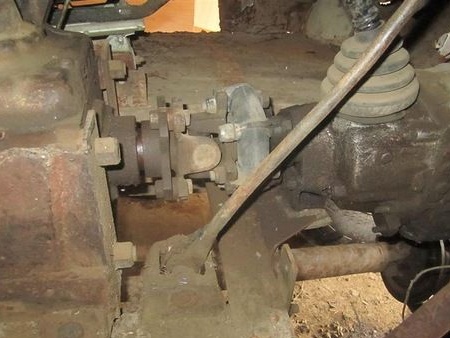
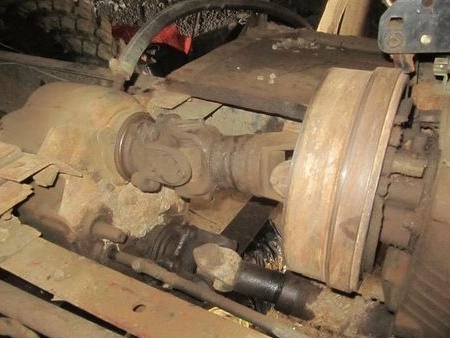

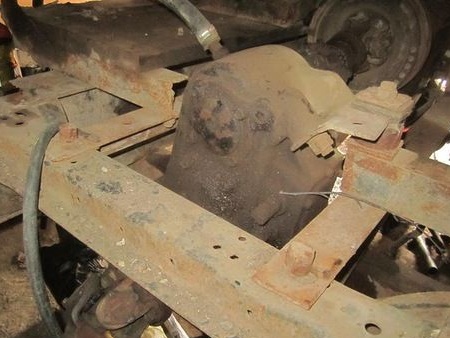
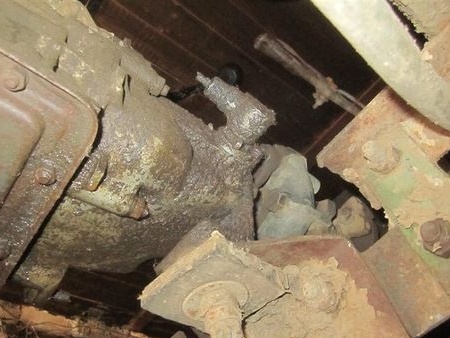
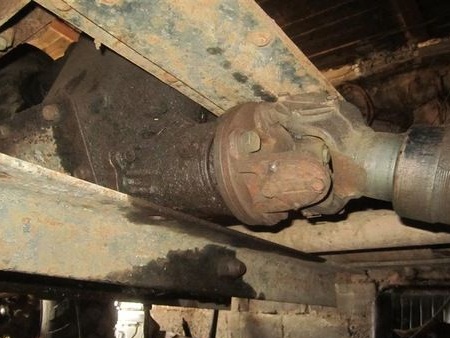
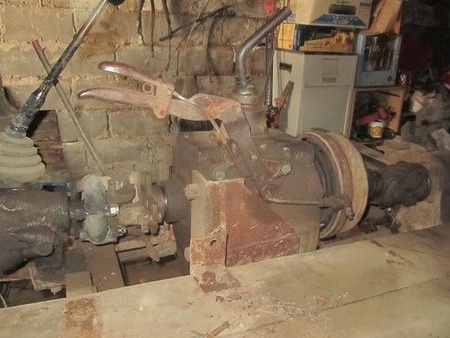
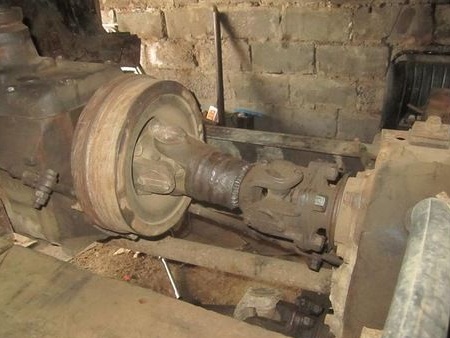
The input shaft is shortened, as on most of the author's models, and a second bearing is also installed. On the shaft, a home-made flange with a very tight fit, guenght is kept from turning - five rollers from a bearing with a diameter of 7 millimeters (a similar design was used on the all-terrain vehicle Mirny and showed itself well). Hold together the washer - nut, thread on the shaft 20 step 1.5. The size of the flange is large - everything is going better this way, initially, according to the author’s idea, the donut VAZ had to get here, it didn’t work, the corrected version got the part from the NIVA coupling.
After these works, the author installed the main transfer case, its draft version — the drive shaft at the back, and also built a suspension for the second transfer case, which will support an additional reduction gearbox and return rotation to the main transfer case.


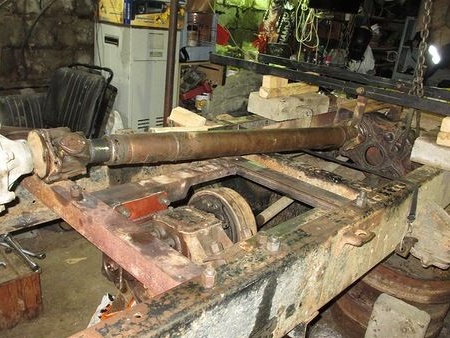

Boxes from ancient Surf, clutch bell Toyota L.
The main RK Gas-66 is redone.
As the author of this all-terrain vehicle explains, as many as three transfer cases are not his whim, but only a production necessity. Indeed, in an all-terrain vehicle to overcome fallen trees and other obstacles, the main thing is not the power brought to the wheels, but the ability of the device to move very slowly, and with all this, the engine should be in normal parameters.
In the first version of the author, the main PK was the same as the Gaz-53 box with a decrease of 6.5 on the first, but then it was a pleasant decision to change the design, namely to make two transfer boxes with a decrease of 4.
Then, an engine was installed on the car, a diesel engine, which previously stood on the Balanar loader.
The engine from CHASS goes directly to the checkpoint from the gas-66 two boxes are docked one after another.
D3900. Under the steering pump alternator. Left hydraulic pump.
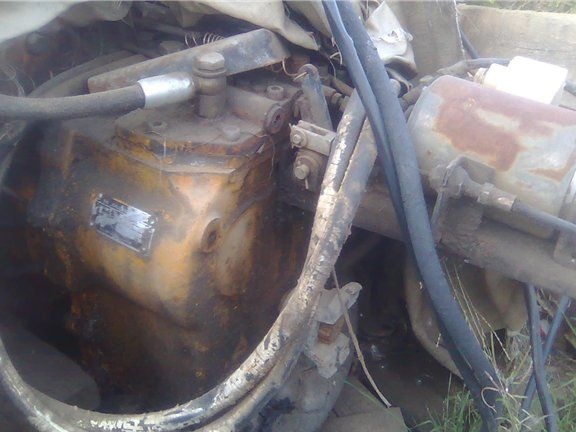

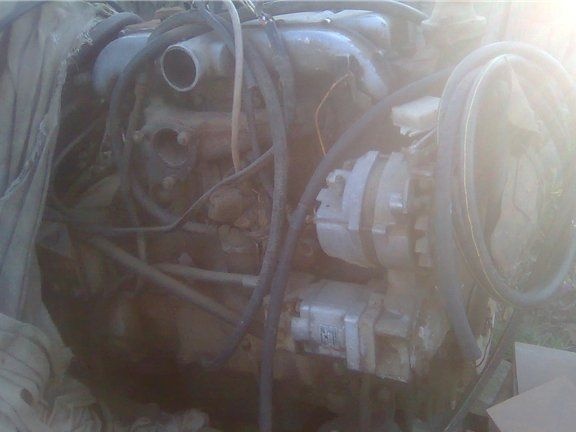
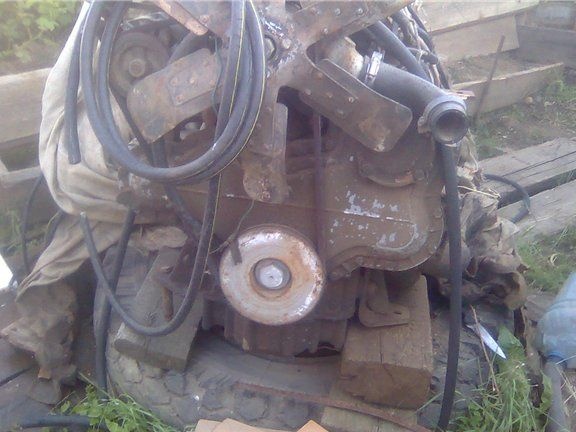

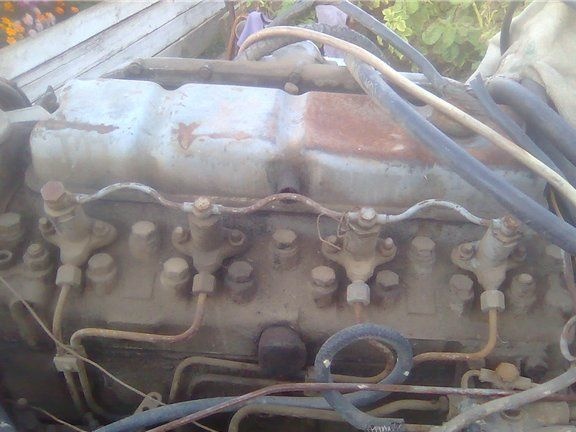



The weight of this engine is about 450 kilograms.
Below are video clips where you can see an all-terrain vehicle in action in the locality native to the author, where the main obstacles are: ravines, fallen trees, blurred clay. Many will say that it’s not so difficult, like you can ride a jeep ...Of course you can, only as the author says: "from the winch and jack the arms to the ground will stretch out, and if you go this way a hundred and a half kilometers, then the ultimate goal of the trip will be no longer fishing and hunting."
Running test video:
Video of the finished off-road vehicle:
The author of the all-terrain vehicle: viktor D from the village of Mirny, Yakutia.

